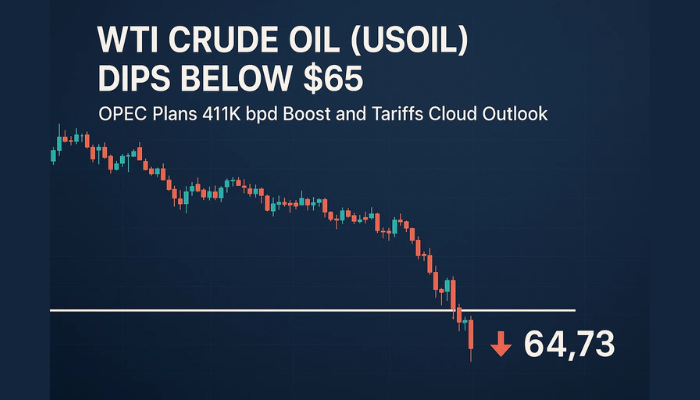WTI Crude Oil Drops to $78.35 After Fed Rate Decision and Rising Stocks
Oil prices fell in early trading on Thursday as investors responded to the U.S. Federal Reserve's decision to maintain current interest rate

Oil prices fell in early trading on Thursday as investors responded to the U.S. Federal Reserve’s decision to maintain current interest rates. This news, combined with ample U.S. crude and fuel stocks, has put downward pressure on the market.

WTI Crude Oil futures fell by 0.2% to $78.34 per barrel, while Brent Crude futures dropped 0.17% to $82.46 per barrel as of 0039 GMT. Both benchmarks had gained approximately 0.8% in the previous session.
Brent futures fell 14 cents, or 0.2%, to $77.38 a barrel by 0005 GMT. U.S.
WTI fell 18 cents, or 0.3%, to $73.07 a barrel.https://t.co/aT5vEBrUIY#energy #OOTT #oilandgas #WTI #CrudeOil #fintwit #OPEC #commodities pic.twitter.com/pbpqoPEb6B
— Art Berman (@aeberman12) June 5, 2024
Fed Maintains Rates, Impact on Oil Demand
The Federal Reserve decided to keep interest rates steady, delaying any potential rate cuts until possibly December. This decision by the Fed, which was announced on Wednesday, suggests that higher borrowing costs could limit economic growth and, by extension, reduce oil demand.
⚡️ BREAKING: Federal Reserve Maintains Interest Rates at 3.5%
The Federal Reserve has decided not to raise interest rates and will keep them at the current level of 3.5%.#FED #FOMC #CPIDATA pic.twitter.com/z4n39WGYBr
— Ashish Gautam(Money Guru Digital) (@Moneygurudigi) June 12, 2024
Fed Chair Jerome Powell indicated that inflation has decreased without significantly harming the economy, suggesting that this trend could continue.
Geopolitical Factors and Supply Concerns
Ongoing ceasefire negotiations in Gaza are also being closely watched by traders. A resolution could reduce fears of supply disruptions from the oil-producing region.
Recently, Iran-backed Houthi militants claimed responsibility for attacks on international shipping near Yemen’s Red Sea port of Hodeidah, highlighting the region’s instability.
Palestinian militant group Hamas has expressed optimism about ceasefire talks, urging the U.S. to pressure Israel towards a permanent ceasefire and other concessions.
Supply Dynamics in Focus
On the supply side, U.S. crude stockpiles increased more than expected last week, driven by a rise in imports. The Energy Information Administration (EIA) reported that fuel inventories also saw a higher-than-anticipated increase.
These supply dynamics are crucial for understanding the current price movements in the oil market. Overall, the combination of Federal Reserve policies, geopolitical tensions, and supply data will continue to shape the WTI Crude Oil price forecast in the coming days.
WTI Crude Oil Price Forecast
USOIL is currently priced at $78.23, down 0.03%. The key pivot point to watch is $77.24. Immediate resistance levels are identified at $79.30, $80.59, and $81.89, indicating potential upward targets.
On the downside, immediate support levels are set at $76.26, $75.18, and $74.03, which could act as safety nets if the price declines. Technical indicators show mixed signals.

The Relative Strength Index (RSI) stands at 59, suggesting moderate momentum. The 50-day Exponential Moving Average (EMA) is at $76.93, indicating a bullish trend as the current price is above this average.
In conclusion, USOIL presents a bullish outlook above the $78.05 mark. However, a break below this level could lead to a sharp selling trend. Traders should monitor these key levels to gauge market direction.
- Check out our free forex signals
- Follow the top economic events on FX Leaders economic calendar
- Trade better, discover more Forex Trading Strategies
- Open a FREE Trading Account


